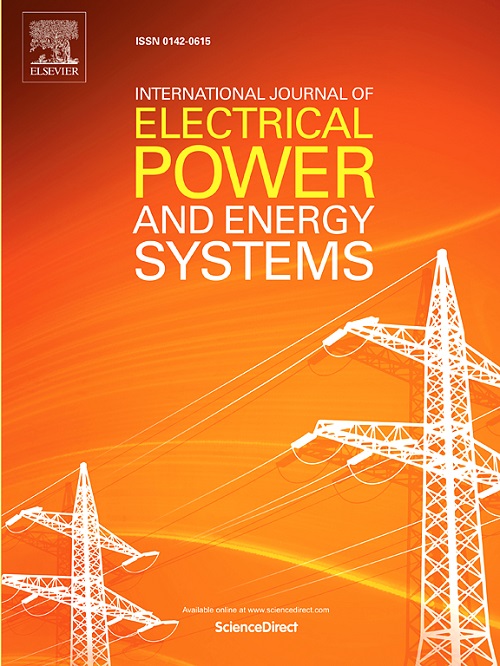Green-fitting scheduling equilibrium model of virtual power plant based on cooperative game with improved shapley value under new-type power system
IF 5
2区 工程技术
Q1 ENGINEERING, ELECTRICAL & ELECTRONIC
International Journal of Electrical Power & Energy Systems
Pub Date : 2025-05-02
DOI:10.1016/j.ijepes.2025.110704
引用次数: 0
Abstract
The new-type power system serves as a basic support for achieving the dual carbon goals of China. Simultaneously, the virtual power plant (VPP) emerges as a significant mode for aggregating decentralized resources on the demand side, which has a guaranteed role in the safe and green operation of the new-type power system. This paper firstly analyzes the green operation framework of VPP, which includes photovoltaic, distributed wind power, gas turbine, energy storage and load. Furthermore, considering the economic characteristics and green consumption characteristics of VPP, a dual-objective optimization scheduling model is constructed, aiming to maximize the VPP’s revenue and achieve the highest green-fitting degree between the VPP’s external power purchase curve and the green energy output curve in the power grid. To solve the model effectively, the improved particle swarm optimization algorithm has been employed. Then, the improved Shapley value method is applied to realize the fair and reasonable distribution of VPP internal income. Finally, the validity of the model is verified by comparative scenarios and sensitivity analysis on the fluctuations of wind and photovoltaic power and Time-of-Use electricity price is conducted. The results show that considering both profits and green-fitting degree objectives can enhance the activity of VPP’s internal members and the overall revenue of the VPP.
新型电力系统下基于改进shapley值合作博弈的虚拟电厂绿色拟合调度平衡模型
新型电力系统是实现中国双碳目标的基础支撑。同时,虚拟电厂(VPP)作为需求侧分散资源聚合的重要模式应运而生,对新型电力系统的安全绿色运行具有保障作用。本文首先分析了VPP的绿色运行框架,包括光伏、分布式风电、燃气轮机、储能和负荷。进一步,考虑VPP的经济特性和绿色消费特性,构建了VPP的双目标优化调度模型,以VPP的收益最大化,使VPP的外部购电曲线与电网绿色能源输出曲线绿色拟合度最高为目标。为了有效地求解该模型,采用了改进的粒子群优化算法。然后,运用改进的Shapley值法实现VPP内部收益的公平合理分配。最后,通过对比场景验证了模型的有效性,并对风电、光伏发电和分时电价波动进行了敏感性分析。结果表明,同时考虑利润目标和绿色适应度目标可以提高VPP内部成员的活跃度,提高VPP的整体收益。
本文章由计算机程序翻译,如有差异,请以英文原文为准。
求助全文
约1分钟内获得全文
求助全文
来源期刊
CiteScore
12.10
自引率
17.30%
发文量
1022
审稿时长
51 days
期刊介绍:
The journal covers theoretical developments in electrical power and energy systems and their applications. The coverage embraces: generation and network planning; reliability; long and short term operation; expert systems; neural networks; object oriented systems; system control centres; database and information systems; stock and parameter estimation; system security and adequacy; network theory, modelling and computation; small and large system dynamics; dynamic model identification; on-line control including load and switching control; protection; distribution systems; energy economics; impact of non-conventional systems; and man-machine interfaces.
As well as original research papers, the journal publishes short contributions, book reviews and conference reports. All papers are peer-reviewed by at least two referees.

 求助内容:
求助内容: 应助结果提醒方式:
应助结果提醒方式:


